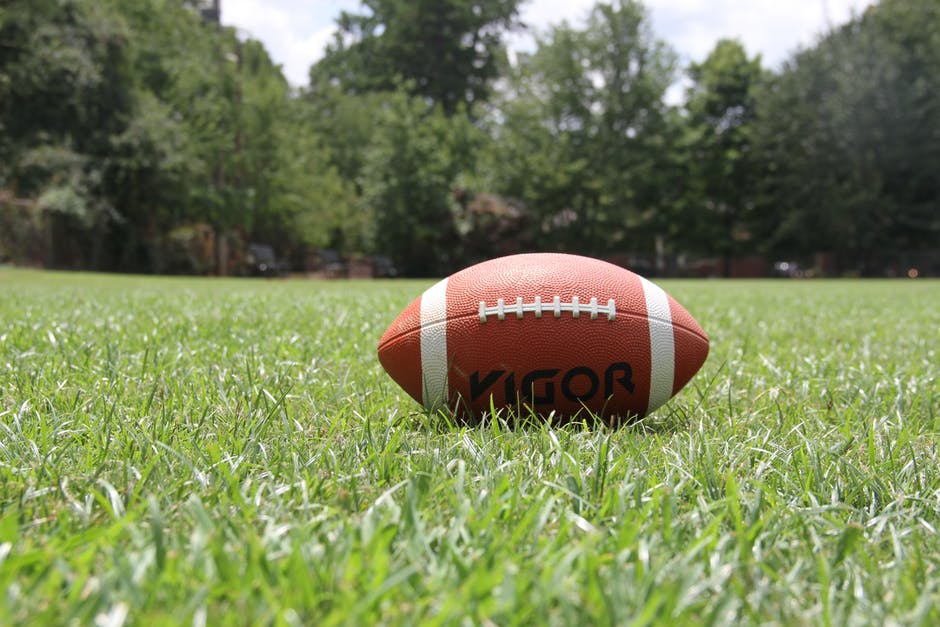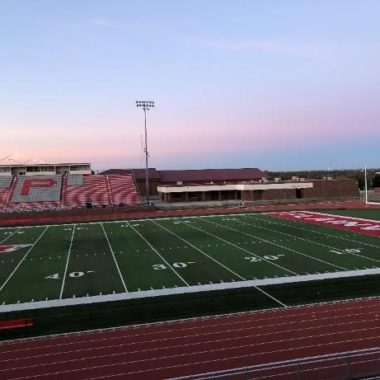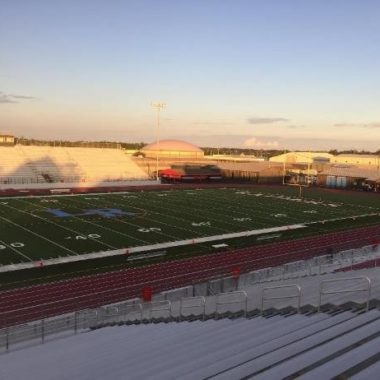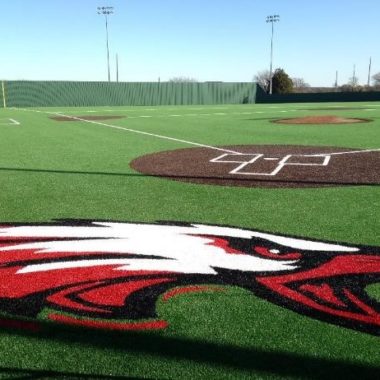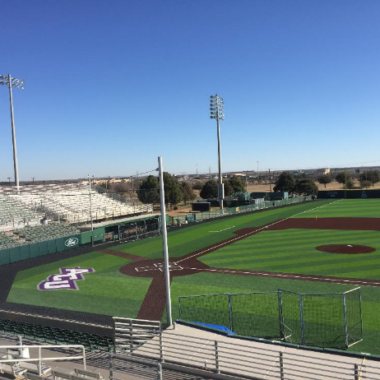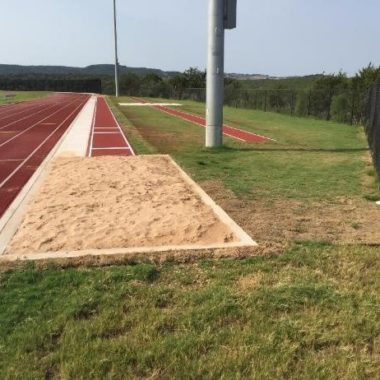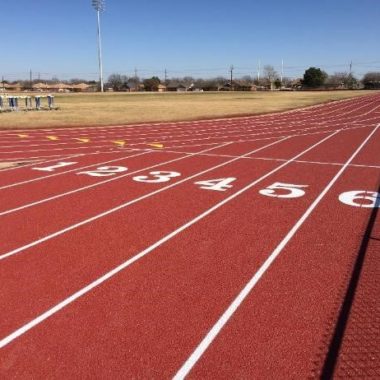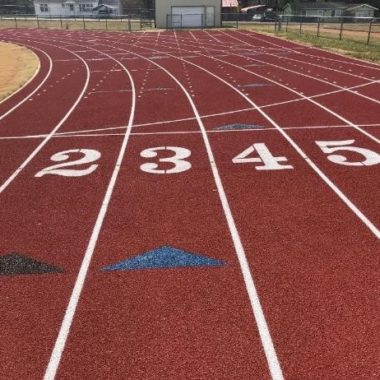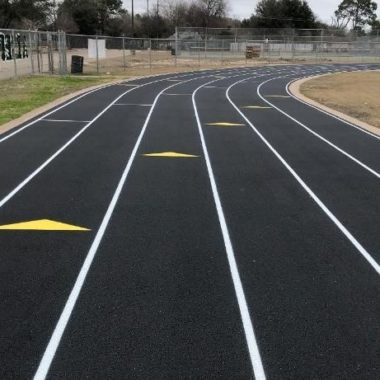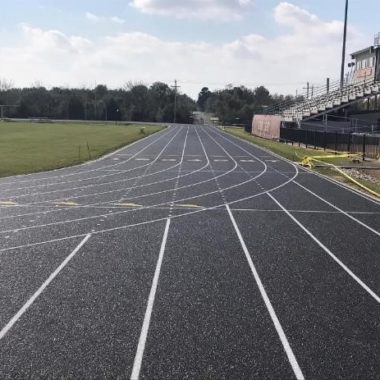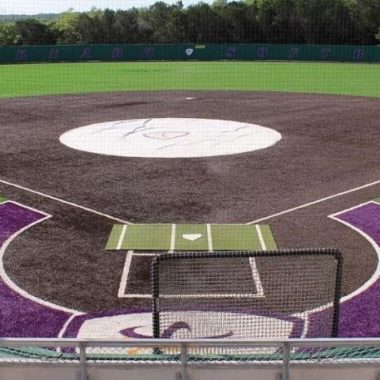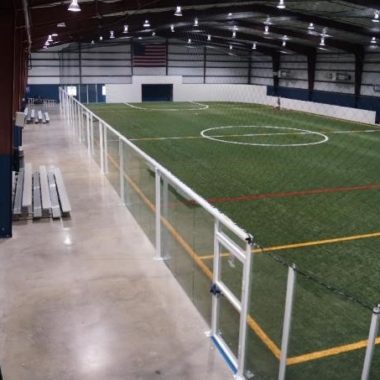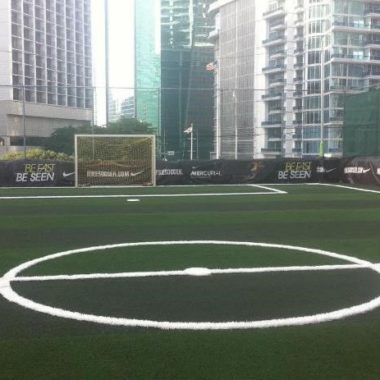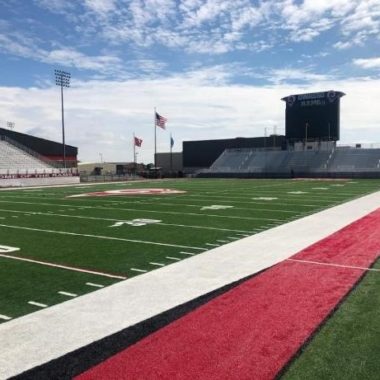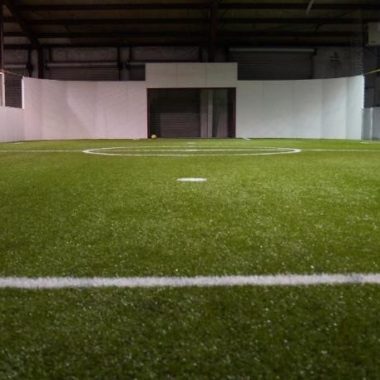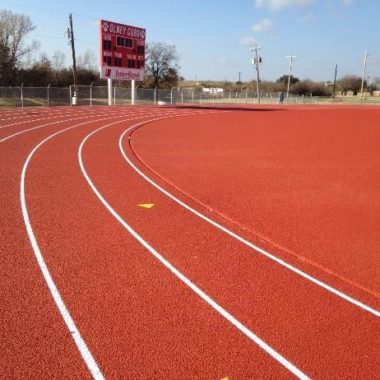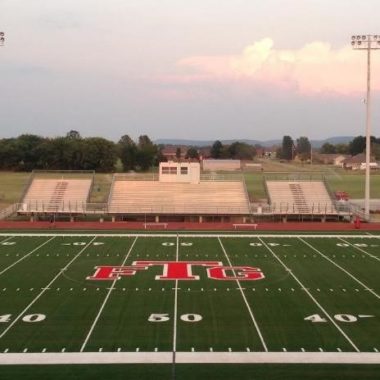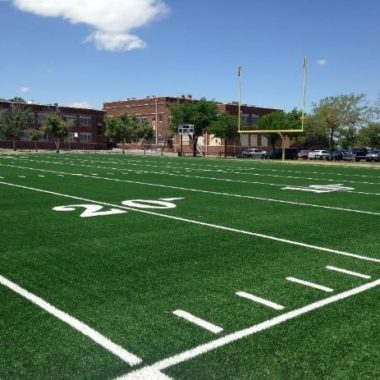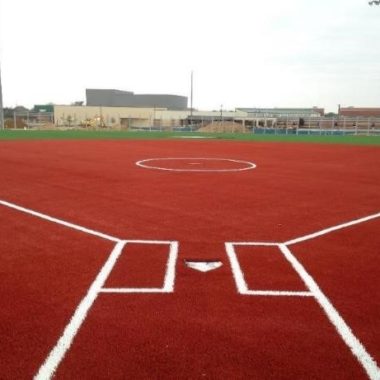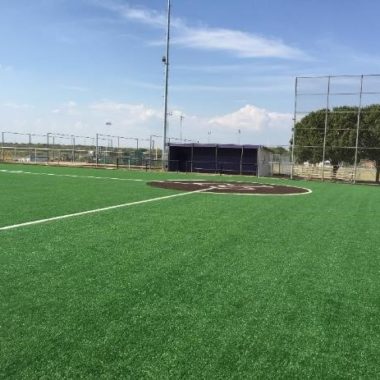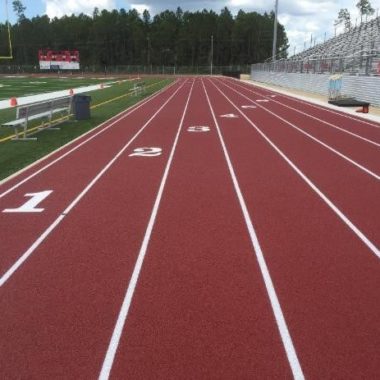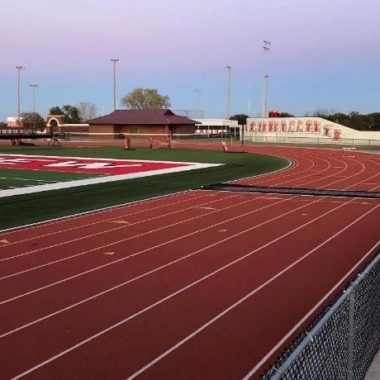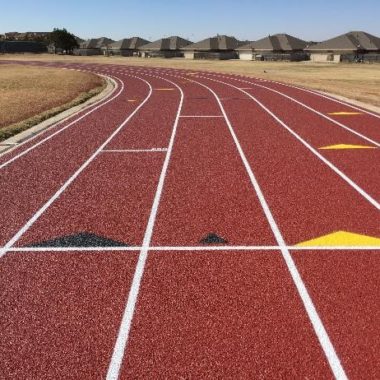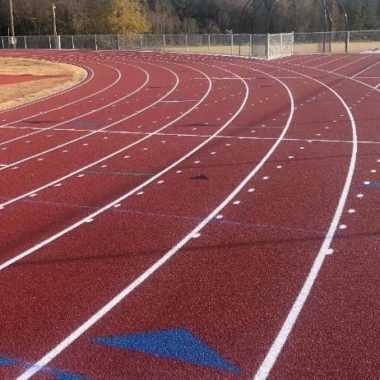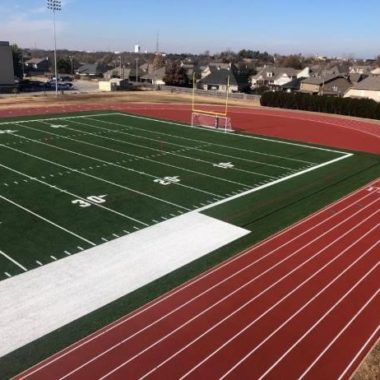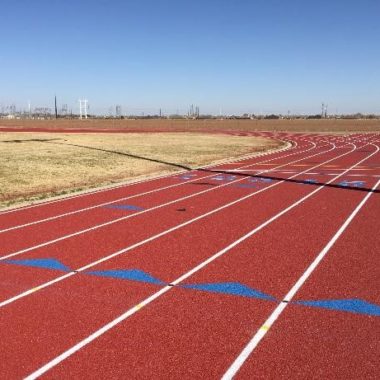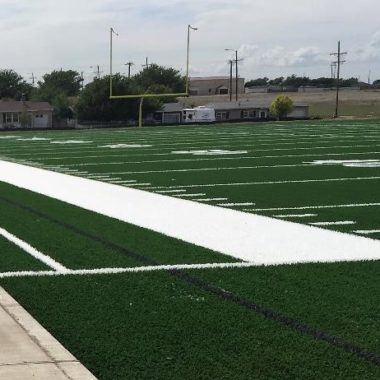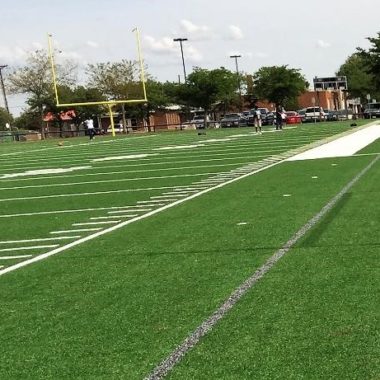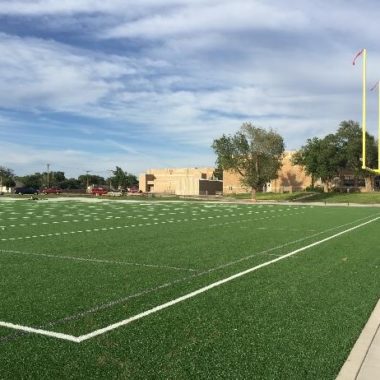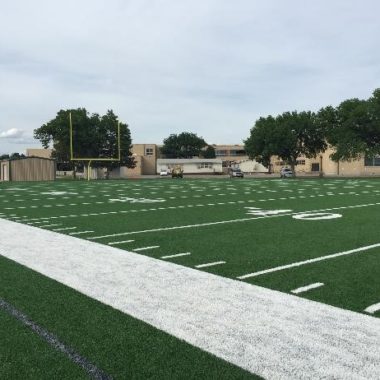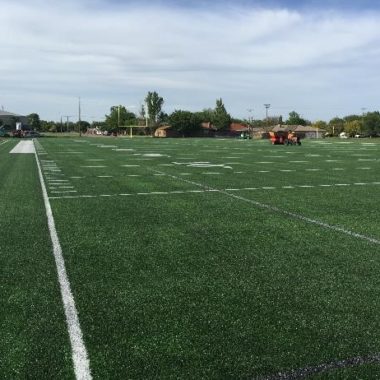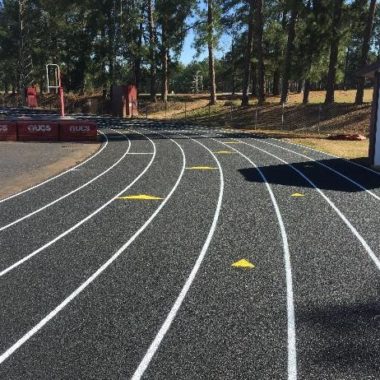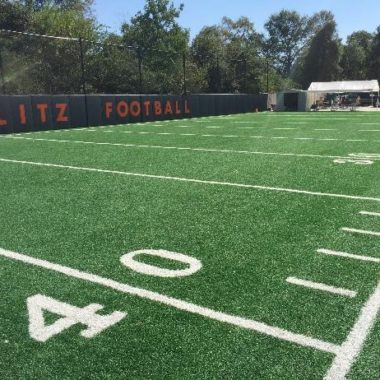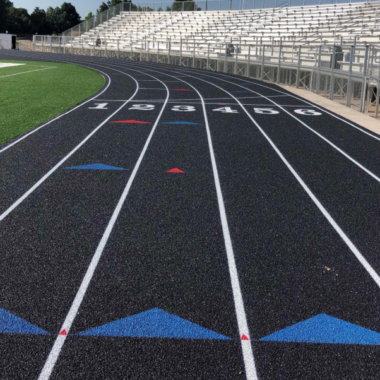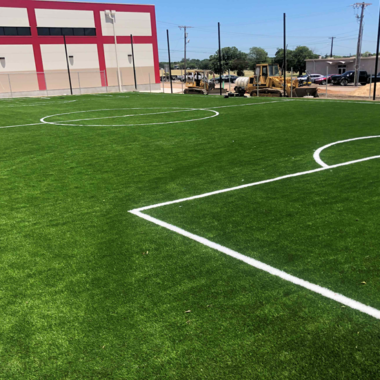How to Choose the Best Football Field Grass for Your Facility
In any football game, the smallest details can make a difference. Even natural grass versus synthetic turf can make or break a game. In fact, natural grass versus an artificial turf could make the difference between a career-changing injury.
According to the NFL rulebook, a football field should be 360 feet long and 160 feet wide. That’s a lot of grass to cover!
If you’re looking to improve your facility’s football field, consider starting from the ground up—literally.
Ready to tackle your search for the best football field grass? With this guide, we’ll cover different types of football turf, so you can choose the right one for your facility. Keep reading to discover your options before making a game-winning touchdown with your decision.
A Little History
Back in the 1960s, natural grass was becoming more expensive for professionals to maintain. To make life easier, professional football fields began using AstroTurf, or a type of artificial grass.
AstroTurf is designed with foot traction and cushioning in mind, but back then, AstroTurf was rough. This made it more difficult for players to make sharp turns. Getting tackled against AstroTurf was also uncomfortable and lead to injuries.
Today, contemporary football field grass uses fibers similar to real grass to eliminate these problems.
Types of Football Field Grass
Many football fields choose natural grasses instead of synthetic football field grass for their facilities. Natural grass looks great and creates a cooler football field surface for players. It can also eliminate the number of injuries players experience.
Meanwhile, artificial grass can help limit issues caused by the weather. From soggy patches of grass after a storm to slippery snow, natural grass can sometimes create a difficult surface to play on.
Plus, natural grass is a living plant. That means regular gameplay and heavy stomping could destroy the surface.
Artificial grass, however, often comes at a cost. This type of football field grass is hotter. To shed water, they’ll need to be crested regularly. They’re also resistant to shear force.
With football, the grass is often chosen based on the local environment. Keep this in mind as you review the options we’ve covered below.
With proper care and management, the football field grass you choose can perform well for your next game. Here are a few options to help you start your search!
Kentucky Bluegrass
Kentucky Bluegrass is a type of natural football field grass. It’s one of the highest quality grasses for football fields and is ideal for cooler seasons.
This type of field grass is grown in the far north.
However, it can also extend into more temperate reasons.
Kentucky Bluegrass germinates fairly quickly and has a creeping growth. However, it’s important to note that this type of grass takes longer to establish than others. Once it does establish, however, the grass creates a thick, carpet-like surface.
You can recognize Kentucky Bluegrass based on its emerald green to dark blue hue.
Most Kentucky Bluegrass varieties are low-growing. This creates a very fine texture that’s ideal for football turf.
The Tall Fescue
Another type of natural grass, Tall Fescue is also ideal for cooler seasons.
Tall Fescue is often used in northern states. Like Kentucky Bluegrass varieties, this type of football field grass germinates quickly. Considered a branching grass, this turf creates a thick sod that will appear green for the entire football season.
However, you’ll likely need to reseed a Tall Fescue football field twice a year.
This will allow you to maintain a thicker sod throughout the season.
The Tall Fescue has also been adapted with newer, shorter varieties. These varieties can also help you avoid disease and pests.
Perennial Ryegrass
Over the years, new varieties and adaptations can make football field grass stronger, richer, and more ideal for gameplay. Improvements to Perennial Ryegrass now offer better texture and color.
Perennial Ryegrass is a natural, cool-season grass.
Like the Tall Fescue, this type of football field grass has also been adapted to resist pets and disease.
Perennial ryegrass grows upright and quickly. This allows it to form a thick, dense sod. If damage occurs to the field, perennial ryegrass can grow quickly to cover the damages.
Bermuda Grass
If you’re looking for football field grass that’s ideal for warmer seasons, try Bermuda grass. This grass is one of the best for all-around athletic fields. It grows in the south as well as transitional areas.
If grown in traditional areas, the grass will require overseeding in the fall. You can use Perennial Ryegrass for early spring greening.
This grass is dense, fast-growing, and fast-repairing.
Field Turf
If you’re looking for artificial turf, there are a number of options to choose from. With AstroTurf no longer used in professional US sports arenas, many facilities choose Field turf instead. This turf is made to mimic natural grass.
Field turf uses polyethylene blades along with a mix of crushed rubber to soften the surface. Underneath is a base of crushed stones and drainage pipes. The softer surface is meant to limit injuries.
AstroPlay
Made by the creators of AstroTurf, AstroPlay is made with a rubber base instead of crushed rock and sand. AstroPlay also used polyethylene blades, which feature nylon root and rubber.
This type of football field grass, which is often used in NFL football fields, is also used for professional soccer sports stadiums around the world.
SprinTurf
SprinTurf comes in five different synthetic blade systems. There are also six options available for infilling football fields, such as rubber or sand. Many high school and college football teams use this type of artificial turf.
Matrix Turf
This artificial turf is manufactured in Austin, Texas and used in the Dallas Cowboys’ stadium. It was also installed in New Orleans’ convention center for the 2013 Super Bowl.
Matrix Turf is available in several blade lengths and shapes to improve cushioning and shock absorption.
Time for a Touchdown: Choosing the Best Football Field Grass
Get your head in the game! With these different types of football field grass, you can make the perfect pick for your team before the new season.
Want to see it in action? Take a look at our work today!


